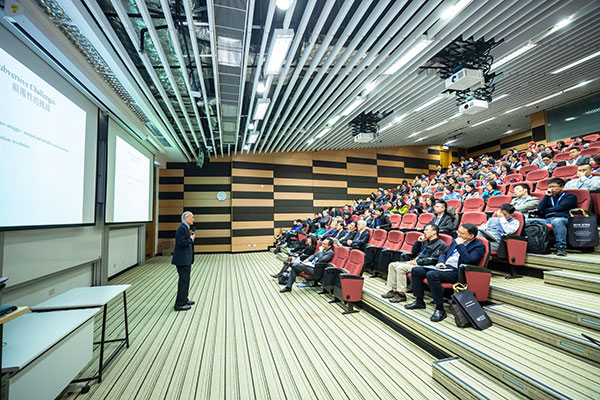
Out of all of the factors that contribute to a business’ performance, workplace culture is possibly the most important. Several studies over the years have shown that organizations with strong cultures consistently outperform those with less positive workplace environments. One study, for example, found organizations with engaged employees generally achieve:
- 65 percent higher share prices
- 26 percent less employee turnover
- 100 percent more unsolicited job applications
- 20 percent lower absenteeism
- 15 percent greater productivity
- 30 percent higher customer satisfaction
And yet, organizations around the world struggle to build positive workplace cultures that have the desired impact on company performance.
Building a strong workplace culture that performs takes more than just a figuring out a handful of policies. It takes emotional intelligence, openness, and good judgement. Most importantly, it’s always harder than it looks.
That’s why we’ve put together this quick guide on building a winning workplace culture. Read on to learn what it takes to become a place people love to work!
What Is Workplace Culture?
Workplace culture is sometimes easier to define than it is to identify. A textbook definition goes something like this:
Workplace culture is a set of beliefs and values that guide workplace behaviors.
These behaviors can include how, where, and when work gets done, but it also tends to govern how employees interact with each other and management. It informs employees in both subtle and non-subtle ways how to treat customers, how to dress, when it’s appropriate to have fun at work, and what forms of having fun are acceptable. For example, some companies forbid drinking alcohol in the workplace, others are indifferent to it, and yet others will have a beer fridge or a tap ready to serve up a frosty brew at any time.
As it is in any culture, there are often both written and unwritten rules in a company’s culture. Written rules tend to be in the form of policies and guidelines, often found in employee handbooks. As such, these are more formal, and employers often require employees to agree to them in writing.
But there are often many aspects of a company’s culture that isn’t reflected in its policies. For example, many workplaces these days offer flexible work hours. While that might entice a number of candidates to join the team, it also can mean there is an expectation for employees to consistently work late to ensure projects are delivered.
Top Obstacles to Creating an Amazing Company Culture
Unwritten rules are just one area where many companies get tripped up when it comes to building a workplace where people want to work. Here are some other common obstacles companies face when developing their culture.
Reinforcing and Maintaining the Culture
It’s one thing to establish a set of written policies and guidelines that embody a company’s culture. It’s another thing to reinforce it. Cultural reinforcement generally needs to be positive rather than punitive, i.e. encouraging behaviors that fit in the culture instead of punishing behaviors that don’t. Of course, when an employee breaks a rule, it’s important to address it properly, otherwise that leads to…
Inconsistent Behaviors
How do employees feel when, for example, they’re told they can’t wear jeans to work, but the CEO or other managers consistently come to work dressed in denim?
Employees become disheartened and disenchanted when they’re told that they can’t do something, but then see coworkers or leaders doing those same things. Inconsistent enforcement sends the message that workplace behavior doesn’t really matter.
Lack of Employee Involvement
Employees want to feel listened to. They want to feel like they’re contributing to something. They want their work to have an impact and meaning. Part of making them feel good about their work is proactively involving them in workplace culture building.
But when culture is forced on them, with little opportunity for input, employees tend to lose respect and interest in their work.
Fragmented Workplaces
It’s become increasingly normal for workplaces to allow employees to work remotely. This is leading to workplaces that are more fragmented than ever before, with employees increasingly scattered around the world. Remote work isn’t likely to go away any time soon, and it’s more imperative than ever for organizations to develop a strong digital culture.
Strategies for Building a Place People Want to Work
Write Down the Rules—Even the Unwritten Ones
In order to develop a lasting company culture that employees love to be a part of, it’s essential to get everything out in the open. And that means writing down all the rules, even the unwritten ones.
How does that work? More simply than you might expect.
First, it’s a good idea to brainstorm all the rules that define your workplace culture. This should include hard rules, such as employees are expected to arrive and be ready to work by 9 a.m. But it should also include social norms, such as helping out coworkers when you see them struggling. Or replacing the paper in the printer. Or what it takes to advance within the organization.
By putting these things into writing, organizations can more transparently and clearly communicate their culture, while also creating documentation of what the culture looks like.
Put Employees First
While creating a strong organizational culture is about increasing company performance as an end goal, it’s essential to put your employees at the center of the culture. “We’re an employee-centered organization,” is a common refrain these days in HR departments.
But it needs to be more than just talk. It needs to be action.
That means developing policies that truly benefit employees. This could include rules and policies that make it easier to take time off, for example, but it could also include employee wellness initiatives such as group exercise opportunities.
Nurture Social Connections
Business and organizations are inherently social. It’s not uncommon for people to value their coworkers as much—if not more—than the company where they work. Strong workplace relationships are a key part of developing a high-performing organization.
The more opportunities employees have to connect over social-oriented activities, the stronger their bonds will become and the better they’ll perform. That might include deploying an internet networking platform to help employees meet each other, but it could also include encouraging and supporting social groups like books clubs, athletic groups, parenting groups, etc.
How Zenvoy Can Help Create and Reinforce a Winning Workplace Culture
Zenvoy has all the tools organizations need to build winning workplace cultures. Contact us to learn how our networking solution can help your organization be an incredible place to work.



